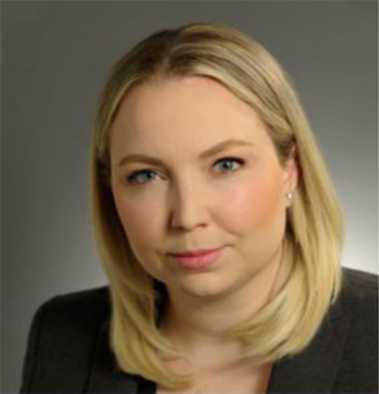23 March, 2020
Frances Donald, Chief Economist

It’s been a rocky week for financial markets, as investors react to policymakers’ response to limit the economic impact of the coronavirus outbreak. While much of the media’s coverage has focused on the number of infections and the market reaction, our Global Chief Economist Frances Donald believes it’s just as important for investors to keep an eye on one area: the fixed-income space.
It’s clear to us that the global economy is experiencing the beginnings of one of the sharpest contractions in modern economic history. As unsettling as that thought is, it’s crucial that we shift some of our attention from the cause of the contraction and start focusing on a troubling side effect: the dysfunction in the global fixed-income market. In our view, it’s critical that central banks worldwide are able to act to prevent this market from experiencing further stress, or the upcoming economic downturn will be prolonged and worsened. From an investment perspective, this could also mean that the risk-off mentality will likely persist for a much longer period of time.
There’s no doubt that the rate at which the COVID19 infection grows—or falls—is important, but so are fiscal measures—they’ll influence the depth of the recession and the timing and shape of the recovery. But the pressing macroeconomic question at hand, in our view, has less to do with the viral outbreak and more to do with restoring calm to the credit markets.
On this front, there’s some positive news. In addition to the U.S. Federal Reserve’s (Fed’s) giant stimulus package unveiled on 15 March 1 and its follow-up announcement regarding the Commercial Paper Funding Facility (CPFF) two days later,2 in the past 48 hours (as of 20 Mar), the Fed has also:
Over in Europe, the European Central Bank also unveiled a massive stimulus package on Wednesday, announcing that it will take much more periphery debt, private sector commercial paper, and corporate debt onto its balance sheet.6
Let’s be clear—these are very important policy actions that have managed to calm the U.S. Treasury markets to a degree. However, we believe there are sizable and pressing problems at play and, until these issues are addressed, it makes sense to remain cautious.
It’s an indisputable fact: Central banks have been hard at work this week, digging deep into their respective toolboxes to limit the extent of the economic damage. In our opinion, while we’re grateful that they’ve done as much within such a short period of time, there can be no doubt that more impactful policy actions will be needed.
1. “FOMC Press Conference Call,” federalreserve.gov, 15 March 2020.
2. “Commercial Paper Funding Facility (CPFF),” federalreserve.gov, 18 March 2020.
3. “Federal bank regulatory agencies issue interim final rule for Money Market Liquidity Facility,” federalreserve.gov, 19 March 2020.
4. “Coordinated central bank action to further enhance the provision of U.S. dollar liquidity,” federalreserve.gov, 20 March 2020.
5. Bloomberg, 16 March 2020.
6. “ECB announces €750 billion Pandemic Emergency Purchase Programme (PEPP),” European Central Bank, 18 March 2020.
The case for liquid real assets in a shifting inflation regime
For over a decade, global investors operated under the assumption that inflation would remain subdued, anchored below 2% - a belief reinforced by central bank credibility and structural disinflationary forces like globalisation and technological deflation. However, the post-pandemic world has ushered in a new regime of structurally higher inflation risks, with evolving policy responses that make liquid real assets increasingly attractive.
Greater China Equities: Perspective for Q4 2025
Heading into the final quarter of the year, we remain constructive, supported by the US Federal Reserve interest rate cutting cycle, Mainland’s demand-side stimulus, strategic priorities outlined in the 15th Five-Year Plan, continued recovery in corporate earnings and robust fund inflows.
Q&A: Potential market impact of a US government shutdown
The US Senate failed to pass a last-minute funding deal, triggering the first federal government shutdown in nearly seven years starting from 1 October. Our Multi-Asset Solutions Team shares insights on how markets have responded during past shutdowns, and how investors can position themselves amid the uncertainty.
The case for liquid real assets in a shifting inflation regime
For over a decade, global investors operated under the assumption that inflation would remain subdued, anchored below 2% - a belief reinforced by central bank credibility and structural disinflationary forces like globalisation and technological deflation. However, the post-pandemic world has ushered in a new regime of structurally higher inflation risks, with evolving policy responses that make liquid real assets increasingly attractive.
Greater China Equities: Perspective for Q4 2025
Heading into the final quarter of the year, we remain constructive, supported by the US Federal Reserve interest rate cutting cycle, Mainland’s demand-side stimulus, strategic priorities outlined in the 15th Five-Year Plan, continued recovery in corporate earnings and robust fund inflows.
Q&A: Potential market impact of a US government shutdown
The US Senate failed to pass a last-minute funding deal, triggering the first federal government shutdown in nearly seven years starting from 1 October. Our Multi-Asset Solutions Team shares insights on how markets have responded during past shutdowns, and how investors can position themselves amid the uncertainty.